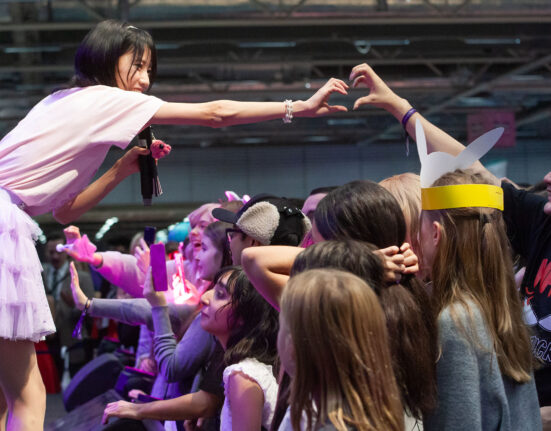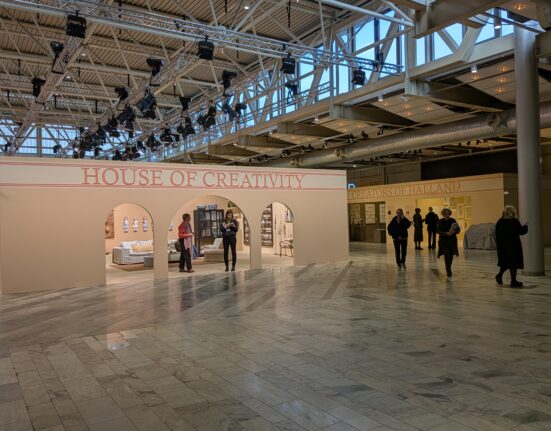Sustainability and fashion haven’t always gone hand-in-hand, but there’s a new idea taking root which holds to the boundary-pushing origins of the industry while promoting longevity and green thinking too. The slow movement is here and with it comes slow fashion.
In this article, you’ll find information on:
- Exploring the Slow Movement
- The rise of Slow Fashion
- How global brands and the industry are promoting the slow fashion ideology
- How to get involved with the Slow Fashion movement
- Where does clothes recycling go?
So, sit back, relax, and get ready to uncover the truth about textile recycling, slow clothing, and the future of fashion…
Body:
Exploring the Slow Movement
Carl Honoré, writer of the internationally best-selling book ‘In Praise of Slow’, calls the Slow Movement a cultural revolution. It rejects the idea that fast is better and it isn’t about going super slow either. It’s about finding a balance and doing things at the right pace instead.
The Slow Movement is a philosophy that aligns with many of our global goals regarding carbon emissions, recycling, sustainability, and more. It started as a fast-food protest which endorsed local produce instead, but its popularity has grown and a culture has developed which includes food, where we live, and even our clothing. Think about it, there’s no need to rush to meet that next milestone or search desperately for the next step in your life. Take it slow and enjoy it instead.
The rise of Slow Fashion
So, what is it and why is slow fashion important? With discount retailers and cheaper chain stores on every corner, fast fashion has exploded in the last few years and it really is a concern. According to research, it’s estimated that the global fashion industry produces 53 million tonnes of fibre every year. And more than 70 percent of that ends up in landfills or on bonfires. In addition, less than one percent of it is reused to make new clothes. Fashion is a historically wasteful industry and it’s this thoughtlessness for our clothing and the environment that birthed the slow fashion movement in 2007.
Kate Fletcher of the UK’s Centre for Sustainable Fashion coined the ‘Slow Fashion’ term to encourage us to start recycling clothes or textiles and to treasure quality over quantity. It inspires education, consideration, and responsible shopping, and the industry is making efforts to adapt and improve their processes as a result.
The Swedish Fashion Council and other similar international fashion organisations have outlined actions for retailers and brands to improve their sustainability and green policies. But Sweden in particular has taken the message to heart. Their research suggests that each Swede consumes roughly 13.6kg of textiles and clothing per year, and 7.5kg of that goes to waste even when a good proportion can be reused. As a result, the Swedish Environmental Protection Agency has recommended that 90% of unwanted clothing or textiles go to recycling in the future.
How global brands and the industry are promoting the slow fashion ideology
- More and more second-hand and vintage shops like Judits and Emmaus in Stockholm, Sweden are popping up on high streets.
- Online thrift stores like Sellpy in Sweden and Vinted in the UK are gaining popularity
- Fashion brands and retailers are becoming more transparent about their sourcing
- There are even international scientific conferences around clothing sustainability
- Fashion trade shows are focusing on sustainability more and more – slow fashion shows popping up to promote the movement as well.
Consumers are taking note too. Upcycling fashion and recycling clothes is now more acceptable and widespread, especially in the environmentally-conscious younger demographics. UK Research suggests that:
68% of 16-24-year-olds are trying to make more ethical fashion purchases
52% of those aged 25-34 bought second-hand clothes in the last year
50% of those aged 25-34 have repaired clothes instead of throwing them away.
How to get involved with the Slow Fashion movement
We’re seeing more and more appreciation and accessibility of sustainability in fashion and other industries – especially in environmentally-conscious countries like Sweden. Stockholm, for instance, promotes slow fashion retailers on their tourism sites. Considering some 79% of consumers have admitted they find it difficult to identify ethical and sustainable fashion retailers – this is a smart move. They also have communities like Zero Waste Stockholm who offer advice and workshops on the zero-waste lifestyle.
If you find you’re spending more than you’re comfortable with, or you’re concerned with how your clothes were produced, getting involved in the movement may help you. Here are a few simple ways that slow fashion newbies can get started:
1.Buy thrifty
Second-hand and vintage clothes are by definition long-lasting and they’re incredibly accessible everywhere – even designer clothes can be bought second hand. So, check out a charity shop, find a tailor for alterations, and get into it.
2. Reuse and repair
When your fave shirt is too big or you find a small tear or a broken zip on your jeans, it’s just the worst. But instead of throwing it in the bin, why not try and mend it or get it altered or remade into something new?
3. Close the cycle with recycling and upcycling
If they’re beyond repair, it may be time to start recycling old clothes. The recycled fabric from your old jeans could be used for shorts or a skirt, your t-shirt material could become a peg bag or wiper – the options for recycling and upcycling clothes are endless.
Where does clothes recycling go?
If you’re not sure how to upcycle clothes yourself, or you really can’t reuse or mend them anymore, you can send them to clothes banks and specialist clothes recycling companies who can do it for you.
Now, let’s talk about what happens to clothes recycling once you send it off.
If they’re in good condition, they’re more than likely sent to countries who really need it, but if it’s deemed unwearable, there are other options. Some companies take these old rags and unsuitable fabrics and upcycle them into things like washcloths, wipers, and more recently, facemasks. They truly close the cycle and ensure as much as possible gets reused.
Companies like those featured here, and the ideas they promote, are the future of the fashion industry. Fast fashion will soon be a thing of the past and we hope that the slow fashion movement continues to grow and spread throughout the world.












